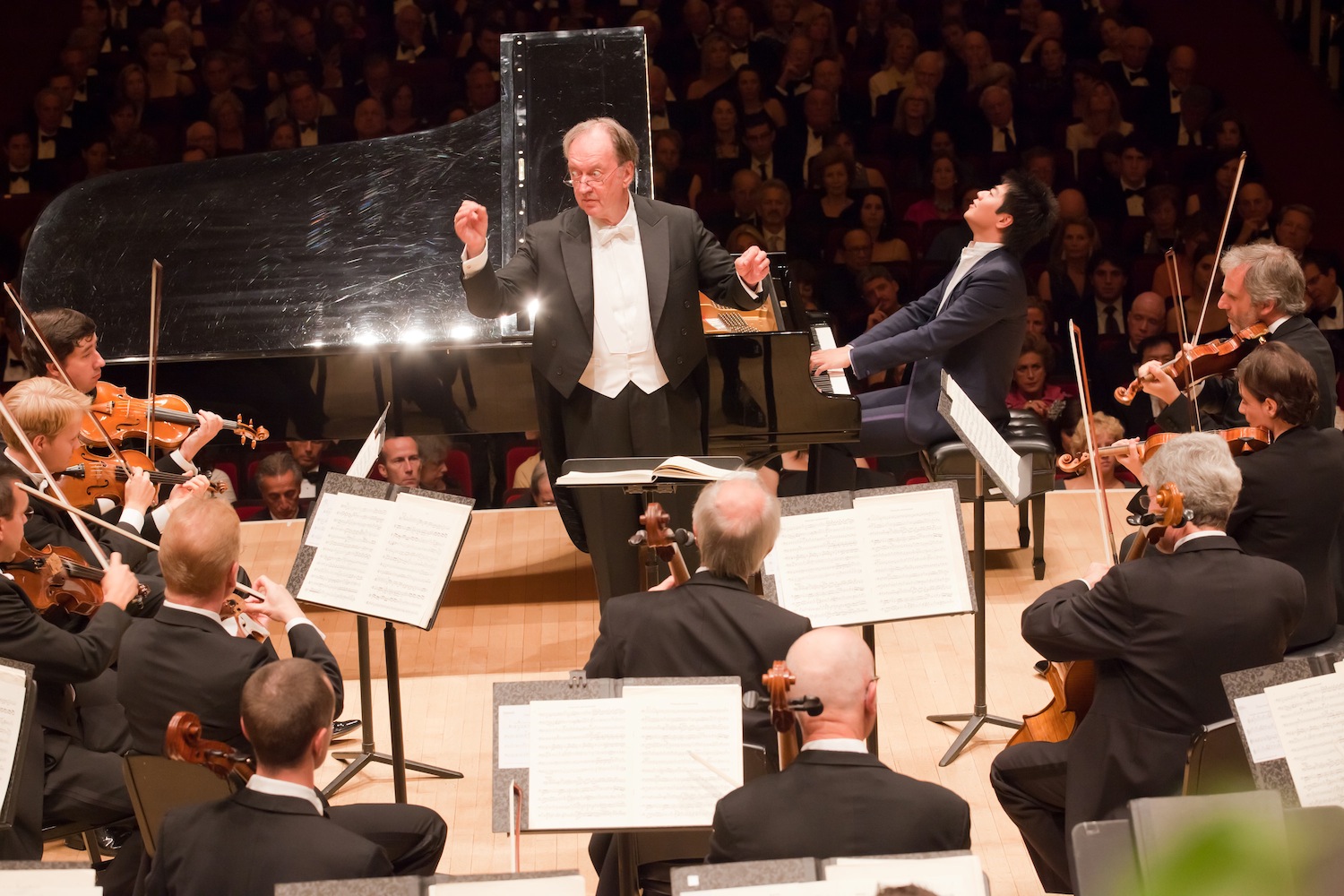Carnegie opens with Vienna Philharmonic and an idiosyncratic Lang Lang

Carnegie Hall opens its season with a gala benefit concert featuring the Vienna Philharmonic Orchestra led by Nikolaus Harnoncourt featuring guest soloist Lang Lang. Photo: Chris Lee
Carnegie Hall has a tradition of inviting a major orchestra to perform for its gala opening night concert. For the current new season the nod went to the Vienna Philharmonic, which brought along conductor Nikolaus Harnoncourt for the gala occasion on Wednesday evening. It was the orchestra’s 101st performance at Carnegie Hall, and the first of four concerts in its current visit. Also participating in the concert was pianist Lang Lang, who collaborated with Harnoncourt and the orchestra in Beethoven’s Piano Concerto No. 1 in C Major, op. 15.
Both Lang Lang and Harnoncourt have a reputation for individualistic, even willful interpretations, and the combination of the two here made for a highly idiosyncratic account of the concerto full of strong dynamic contrasts, flexibility of rhythm that was sometimes startling and preoccupation with detail. The adventure began at once when the opening orchestral phrases were played with the utmost lightness and then tapered down to a whisper. Harnoncourt stretched out pauses so as to heighten expectations for what would come next, a practice that produced an almost comic effect at the first statement of the second theme when, before its entrance, the strings played the very simple alternating figure that goes on to support it.
In a sense, the ultra quiet opening phases forecast much of Lang Lang’s playing. His passagework often had a languid, almost dreamy quality but then he would jar the listener with a sudden outburst. Indeed, the performance could hardly be called subdued, least of all in the extremely lengthy cadenza Lang Lang played, which could almost stand as a piece in its own right as a Fantasy on Themes from Beethoven’s First Piano Concerto.
The second movement was less eccentric and often beautiful, though it sometimes bordered on the precious. And the concluding Rondo sparkled agreeably, as Lang Lang chose to accent the initial upbeat of the rondo theme, thereby adding a degree of rhythmic ambiguity to the performance. He was surprisingly coy in the jazzy middle theme, which was overshadowed by the orchestra, although elsewhere he chose to bring out interesting details through voicing and choice of accents. Still, it was a relief when when this roller coaster of a performance drew to a close.
A sizeable portion of the audience appeared to be highly impressed, however, and called the pianist back to the stage repeatedly until he repaid them an encore, the final movement of Prokofiev’s Seventh Piano Sonata. His brisk tempo ratcheted up the considerable technical challenges of this dauntingly aggressive piece, his fleet playing met them with aplomb and, in the process, tempered and sometimes even beautified the music’s savagery.
The other work on this nominally all-Beethoven program was the Symphony No. 7 in A Major, op. 92, which received a more coherent performance than did the concerto. Beginning with the purposeful scalar passages and punctuating chords of the slow introduction, the many points that Harnoncourt chose to emphasize appeared more closely designed for the achievement of larger structural goals and in any case ensured a bracing level of excitement throughout the first movement.
The second movement, which did not dawdle, seemed conceived interpretively to make maximum dramatic effect as it grew steadily from a ghostly beginning toward making a mighty statement. Still, the high level of intensity that Harnoncourt insisted on sustaining eventually made for a relentlessness that was somewhat at odds with this good natured work and left the listener (at least this listener) longing for moments of respite, riveting though the experience was.
Often Harnoncourt can seem to turn his back on his long experience as a practitioner of early music. But you could sense his roots in the unusual sonorities he obtained from the orchestra, which is renowned for its tonal beauty and sumptuousness. Full bodied tutti passages especially had a period-instrument astringency supplied by strings and winds alike and made for a very different sound from that associated with the Vienna Philharmonic. It must be said that the orchestra responded magnificently in appearing to give the conductor exactly what he wanted.
The orchestra’s brief residency also includes Smetana’s Ma Vlast, Harnoncourt conducting, on Thursday and Gustavo Dudamel conducting varied programs on Saturday and Sunday.